Appearance before the Standing Committee on Indigenous and Northern Affairs on Improving Graduation Rates and Successful Outcomes for Indigenous Students, March 6, 2023
Table of contents
Scenario Note
Logistics
Date: March 6, 2023
Time: 3:30 p.m. – 5:30 p.m.
Location: Room 415, Wellington Building, 197 Sparks Street, and virtual
Information for Appearing In-Person:
- Witnesses (especially those without a Hill pass) should arrive at least 30 minutes prior to the start of the meeting to proceed through security.
Appearing:
Indigenous Services Canada (ISC)
- The Hon. Patty Hajdu, Minister of Indigenous Services
- Gina Wilson, Deputy Minister, Indigenous Services Canada
- Rory O'Connor, Director General, Regional Infrastructure Delivery Branch, Regional Operations Sector
- Jonathan Allen, Director, Programs Directorate, Education Branch (by video conference)
Crown-Indigenous Relations and Northern Affairs Canada (CIRNAC)
- Angela Bate, Director General, Treaties and Aboriginal Government
- Dionne Savill, Director General, Implementation Branch
Streaming:
- The meeting can be watched via ParlVU, however there may be an up to 70-second delay with the field. A real time audio line will be shared if one is provided for this meeting.
Meeting Proceedings
This will be a hybrid meeting.
Witnesses who are appearing virtually will be asked to access the meeting prior to its start to conduct sound/video/connectivity checks. The Zoom link will be sent directly from the House of Commons to the witnesses.
The Chair will call the meeting to order and provide instructions for the meeting proceedings. He will then introduce the witnesses and the Minister to deliver her opening remarks (5 minutes). This will be followed by a Q&A period (details below).
It is recommended that all speakers speak slowly and at an appropriate volume to ensure they are heard by the interpreters. All witnesses are asked to mute their microphones unless they are speaking.
While simultaneous translation will be available, witnesses are asked to respond to questions in either English or French, but to limit switching back and forth between languages as this often creates technology/interpretation challenges. It is recommended that the speeches are made in one official language.
Following the opening remarks, there will be rounds of questions from Committee members (as listed below).
Committee members will pose their questions in the following order:
- First round (6 minutes for each Party)
- Conservative Party of Canada
- Liberal Party of Canada
- Bloc Québécois
- New Democratic Party of Canada
- Second round
- Conservative Party of Canada (5 minutes)
- Liberal Party of Canada (5 minutes)
- Bloc Québécois (2.5 minutes)
- New Democratic Party of Canada (2.5 minutes)
- Conservative Party of Canada (5 minutes)
- Liberal Party of Canada (5 minutes)
Context
Potential Areas of Interest for Members of the Committee:
- Having just held meetings on their Indigenous Languages study, it is possible that MPs will ask questions regarding the provision of education programming in Indigenous languages. For example, during the February 6, 2023 meeting, MP Idlout (NDP) asked the Minister of Heritage if he would commit to building 13 schools in Nunavut to support education in Inuktitut.
- Members of the Committee from northern Ontario – MP Melillo (CPC) and MP Powlowski (Lib) – might raise questions around the implementation of the Aninshinabek Nation Education Agreement.
- Members of the Committee from BC – MP Weiler (Lib) and MP Zimmer (BC) – may ask questions regarding the implementation of education agreements in BC.
- The Parliamentary Secretary to the Minister of Crown-Indigenous Relations, MP Battiste (Lib) may ask questions regarding the implementation of Mi'kmaq Education Act.
- MP Idlout (NDP) and MP McLeod (Lib) are likely to focus their questions on education initiatives in the North.
In the Media:
- On February 1, 2023, the Toronto District School Board voted to replace its compulsory Grade 11 English course with one focused on Indigenous writers, adopting mandatory Indigenous education across the board .
- On February 28, 2023, an article was published speaking to the investments being made by the Government of Canada and Doig River First Nation in BC on education and employment skills training programming for their community.
Background:
On November 21, 2022, INAN adopted the following motion:
It was agreed, — That, pursuant to Standing Order 108(2), the committee undertake a study to examine the existing funding and governance structure of the education system starting with early learning through kindergarten to grade 12 and post-secondary for Canada's Indigenous people and provide recommendations to improve graduation rates and successful outcomes for students and on how to close the post-secondary education (PSE) attainment gap; that the committee hear from stakeholders and subject matter experts from all regions of Canada regarding the existing funding and governance structure, and provide recommendations; that the Minister of Crown–Indigenous Relations and Minister for Indigenous Services be invited to provide relevant information from their departments and answer related questions from members; that the committee report its findings to the House; and that pursuant to Standing Order 109, the committee request that the government table a comprehensive response to the report.
On February 13, 2023, INAN held its first meeting of this study, hearing from representatives of Inuit Tapiriit Kanatami (ITK) and the Métis National Council (MNC). Questions were asked regarding ITK's vision for education reform in the north; Métis representation in the education system, including access to programming in Michif; the implementation of TRC CTAs 52-65; early learning, and; ITK's education agreement with the Crown.
While the committee has not undertaken a study specifically on the education since at least the 42nd Parliament, the subject has been raised during other studies:
- 44th Parliament, 1st Session
- Report 2 – Barriers to Economic Development in Indigenous Communities
- Recommendation 10: That the Government of Canada work with the National Indigenous Economic Development Board, as well as other Indigenous organizations and education organizations that partner with First Nations, Inuit and Métis communities to support literacy, such as the Martin Family Initiative, to explore the possibility of establishing a National Indigenous Education Institution or Centre of Excellence.
- Report 2 – Barriers to Economic Development in Indigenous Communities
- 42nd Parliament, 1st Session
- Report 22 – Summary of Evidence of Capacity Building on Reserves
- The report summarized testimony heard that included the need for long-term, guaranteed funding agreements with Indigenous communities for education, on-par with provincial funding, especially in remote communities. Witnesses spoke to distance learning being a possibly promising initiative, but that this would be hindered by the lack of connectivity in the communities that would benefit the most. Testimony was heard advocating for the importance of including Indigenous languages in education. Finally, report was critical of the findings in the 2018 OAG report regarding ESDC's skills and employment training programming, which found that ISC overstated First Nations' high school graduation rates.
- Report 9 – Breaking Point: The Suicide Crisis in Indigenous Communities
- Recommendation 7: That the Government of Canada, in partnership with provincial, territorial and Indigenous governments work to ensure that outcomes for Indigenous students are equivalent to non-Indigenous counterparts, with an emphasis on their ability to participate in post-secondary education and/or vocational training.
- Recommendation 24: That the Government of Canada support Indigenous communities to develop forward plans to identify specialized resources and intervention protocols across education, social, justice and health sectors, ensuring these individuals can provide services in the local language…
- Report 22 – Summary of Evidence of Capacity Building on Reserves
Recent INAN studies:
- Indigenous Languages (4 meetings from December 12, 2022 – February 6, 2023)
- Subject matter of Supplementary Estimates (B), 2022–23 (1 meeting, December 8, 2022)
- Bill S-219, An Act respecting a National Ribbon Skirt Day (1 meeting, December 5, 2022)
- Arctic Sovereignty, Security and Emergency Preparedness of Indigenous Peoples (10 meetings from June 3, 2022 – December 1, 2022)
Opening Remarks for the Honourable Patty Hajdu
Minister of Indigenous Services
House of Commons Standing Committee on
Indigenous and Northern Affairs (INAN)
Study on Education
Check on delivery
Kwe Kwe, Tansi, Unnusakkut, Good morning, Bonjour.
Grateful to be with you here on the unceded traditional territory of the Algonquin Anishinaabeg people.
Thank you for inviting me to discuss the work the federal government is doing to improve education for Indigenous youth.
As you all know, the history of European settlement and resulting policy to displace Indigenous peoples from their lands, traditions and culture meant that many Indigenous children for generations have been robbed of their right to thrive in communities with family and their right to access education comparable to non-Indigenous children, often in the same region or territory.
What a waste of talent — talent that Canada needs more than ever. It should be our collective commitment to change these outcomes, for this generation and the ones to come.
To change these outcomes, we need not just financial investment, but strong support for the leaders who are building education systems that are founded on and connected to language and culture from early learning through to post-secondary. The mainstream schools have not served Indigenous students well, and the effects of racism, curriculum that whitewashes Indigenous perspectives and history have compounded the problem.
Students on-reserve must be funded comparably to students in provincial systems off-reserve, and investments must be made in critical areas such as language and culture, full-day kindergarten, and before- and after-school programming.
In 2016 the federal Liberal government began the work of creating new partnerships with Indigenous peoples to reform the way elementary and secondary education is funded. The government set provincial education formulas as a new minimum base and agreed to modifications that address specific First Nations' needs and priorities. To bring credibility to this work, the government has increased funding for elementary and secondary education for First Nation students on reserve by 74% between 2015 and 2021
And we see encouraging signs that our new approach is working. As of 2021 just over 53% of First Nations youth between 18-24 years old had a secondary school diploma or equivalent. The gap in First Nation's attainment as compared with non-Indigenous Canadians is getting smaller. It is now 37% as opposed to the 44.5% gap seen in 2016, which tells us that increased supports for youth is contributing to their academic success.
But the deficit left by ten years of sparse to no new money spent on Indigenous youth meant that infrastructure was often decrepit and unsafe.
Indigenous youth deserve and need safe places to learn. Indigenous Service Canada and AFN have commissioned studies that demonstrate the unacceptable and shameful gap in infrastructure between Indigenous and non-Indigenous communities.
Since 2015 the government has committed $2.35B in targeted funding for school facilities. $2.27B has been allocated, funding 250 projects including 70 new schools. Of the 250 projects 164 are now complete and 86 projects on going. These infrastructure investments serve 270 communities and approximately 313,000 students.
This is an important step towards closing the gap in infrastructure sustainability by 2030.
The federal government used provincial formulas as a minimum base to address the equity gap. Partners have expressed that each regional area is unique with some communities requiring support for transportation, teacher residences and/or healthy meals as part of their educations systems.
Many Indigenous partners are pursuing Self-determined education. Nine Regional Education Agreements have been signed to restore control to First Nations on the design and delivery of education on reserve, ensuring that learning is grounded in culture and language and that the funding formulas work best for each unique region.
In July 2022, I had the honour of joining Grand Chiefs and Chiefs of the First Nations Education Council (FNEC) to sign a multi-million dollar Regional Education Agreement with 22 First Nations supporting the First Nations Education Council in Quebec.
At that event, I was moved by a young girl who opened the ceremony by speaking in her own Indigenous language of Mohawk Kanien'keha. She learned her language through an immersion program that she joined in kindergarten.
We are supporting work with First Nations towards close to 50 new agreements, and leaders are determined to provide education that results in confident and capable adults, rooted in culture and language.
In January, I visited with Dianne Roach, Director of Operations of the Shingwauk Kinoomaage Gamigm, who toured us through their new Anishinaabe post-secondary institute, partially funded by FedNor. The institute works to preserves the integrity of Anishinaabe knowledge and understanding. I was greeted by students learning and teaching Ojibwe. The confidence, connection and strength these students are building in themselves is a gift to their communities and to the generations to come.
The promise of reconciliation is that every person in this country has the pride and confidence in themselves that they can reach their full potential. Indeed our country can only thrive if every First Nations, Inuit and Metis child has hope for their future and the confidence that they can learn, grow and contribute to their family, community, nation and world. That they see themselves as having the best possible learning, education and economic opportunities, allowing for the promise of a better future, success and prosperity.
And we will get there, by ensuring that First Nations, Metis and Inuit educators have the tools and resources they need to rightfully design and deliver the education their youth deserve.
ISC's education mandate and programming suite, by distinction group
ISC Education — Federal Commitments and Authorities
Key Messages
- The Department of Indigenous Services Act (2019) outlines the Minister of Indigenous Services' responsibility for ensuring that education services are provided to eligible individuals as well as to advance the gradual transfer of departmental responsibilities to Indigenous communities, governments and organizations.
- Indigenous Services Canada (ISC) provides support for elementary and secondary education programs for First Nations students ordinarily resident on reserve. For First Nations students in the North (Yukon/NWT), off-reserve First Nations, Inuit and Métis, education support is provided by their respective province or territory.
- ISC also supports First Nations, Inuit and the Métis Nation's post-secondary education and provides funding to three distinctions-based post-secondary education strategies as well as programming to support First Nation and Inuit youth employment and skills development.
- Complementary to this work on elementary, secondary, and post-secondary education, the Government of Canada also plays a large role in Indigenous early learning and child care, with efforts led by the Minister of Families, Children, and Social Development.
Background
- Since 1972, the Government of Canada has committed to a policy of First Nations' control of First Nations Education for elementary and secondary education. ISC is also committed to the principle of Indigenous control over distinctions-based post-secondary education strategies.
- Some First Nations have assumed jurisdiction over education through self-government agreements, which fall under the responsibilities of CIRNA.
- Canada has committed to implementing the Truth and Reconciliation Commission Calls to Action (CTAs 6-12)Footnote 1 and continues to make efforts to address the national tragedy of Missing and Murdered Indigenous Women, Girls and 2SLGBTQQIA+ People by responding to the Calls for Justice.
- An Act respecting the United Nations Declaration on the Rights of Indigenous Peoples received Royal Assent in June 2021, and provides a road map for the Government and Indigenous peoples to work together to fully implement the Declaration (UNDRIP, article 14). UNDRIP promotes Indigenous education rights, including the establishment and control of their education systems supporting language and culture.
- ISC education programming supports Canada's efforts to address the United Nations Sustainable Development Goals by aligning programming to support Goal 4: Quality Education which aims to ensure inclusive and equitable quality education and the promotion of lifelong learning opportunities.
Current Status
- The Government of Canada established Permanent Bilateral Mechanisms in 2016 with First Nations, Inuit and Métis Nation leaders as a forum to identify joint priorities, co-develop policy and monitor progress, which includes honouring commitments to Call To Action 10 (to draft new Aboriginal education legislation with the full participation and informed consent of Aboriginal peoples).
- Education features in all bilateral mechanism discussions. It features prominently in the Inuit-Crown Partnership Committee and more recently at the Métis Nation Permanent Bilateral Mechanism table.
- In the context of First Nations education, the focus is the co-developed transformation of elementary and secondary education and the way forward for supporting post-secondary education and lifelong learning.
Elementary and Secondary Programs
Key Messages
First Nations
- ISC's Elementary and Secondary Education Program supports full-day Kindergarten (ages four and five) to Grade 12 education for eligible First Nations students who are resident on-reserve, by providing funding directly to First Nations recipients and education organizations designated by First Nations.
- The fundamental concept of First Nations control of First Nations education guides all of ISC's work in this area.
- On April 1, 2019, ISC implemented a co-developed policy and funding approach – referred to as Education Transformation – that is based on comparability with funding in provincial education systems.
- The approach is guided by the principles of transparency, predictability, stability and flexibility.
- Under this approach, core funding for First Nations elementary and secondary education is allocated through interim regional funding formulas that reflect student enrolment and provincial comparability, plus adaptations and enhancement funding beyond provincial comparability.
- Examples of areas of funding beyond comparability are: full-day kindergarten for students aged four and five, additional funding for language and culture, and before and after school programming.
- Education Transformation also includes an expanded effort to support the regional and local diversity of First Nations education approaches through the development and establishment of regional education agreements that are tailored to the particular local or regional goals and priorities of First Nations.
Background
First Nations
- In addition to core elementary and secondary education funding, ISC also provides funding through targeted education programs:
- The Education Partnerships Program supports the establishment of partnerships amongst First Nations organizations and schools, provincial education systems and Canada. It also supports the capacity development and funds the development of technical tables and education agreements.
- The High-Cost Special Education Program provides support for eligible First Nations students with moderate to profound high-cost special education needs to access support services.
- The Research and Learning Program supports research projects that contribute to educational initiatives that are positively impacting First Nations students and their education outcomes.
- The Innovation in Education Program supports the development and implementation of First Nations innovative education programs which aim to improve education outcomes
- Support for Adult Education announced in Budget 2021 is being implemented, beginning in 2022-23, to support First Nations adults on reserve and in the North to complete secondary education credentials.
First Nations and Inuit
- The First Nations and Inuit Cultural Education Centres Program supports First Nations and Inuit communities in expressing, preserving, developing, revitalizing and promoting their culture, language and heritage.
Current Status
First Nation
- Refinements to funding formulas will continue to be developed with First Nations partners at technical tables across the country to better align with First Nation's data.
- ISC continues to work with First Nations to establish and implement regional education agreements, and to seek sources of funding where current allocations are insufficient.
More Information
- The Elementary and Secondary Education Program:
- The Education Partnerships Program: National program guidelines.
- The High-Cost Special Education Program: National program guidelines.
- The Research and Learning Program: National program guidelines.
- The Innovation in Education Program: National program guidelines.
- The First Nations and Inuit Cultural Education Centres Program: National program guidelines.
Post-Secondary Programs
Key Messages
- ISC Canada provides funding and supports through distinctions-based post-secondary education strategies for First Nations, Inuit and the Métis Nation.
- ISC is committed to supporting Indigenous control of Indigenous post-secondary education and will continue working collaboratively with Indigenous partners to ensure that First Nations, Inuit and Métis Nation learners have access to the same high-quality post-secondary education services and opportunities as non-Indigenous Canadians.
Background
First Nations:
- The First Nations Post-Secondary Education Strategy is comprised of 4 components:
- the Post-Secondary Student Support Program (PSSSP): The PSSSP aims to improve socio-economic outcomes for First Nations by supporting First Nations in providing eligible students with funding to access education opportunities at the post-secondary level, consistent with the principle of First Nations control of First Nations education. The overall aim of the program is to provide an inclusive and quality education by closing the education gap between First Nations and non-Indigenous Canadians.
- the Universities and College Entrance Preparation Program (UCEPP): The UCEPP provides non-repayable financial support for First Nations students who are enrolled in accepted university and college entrance preparation programs. This enables them to attain the academic level required for entrance into degree and diploma credit programs, as prioritized and directed by First Nations.
- Post-Secondary Partnerships Program (PSPP): The PSPP supports First Nations to define their own partnerships with institutions to increase the availability of post-secondary education programs tailored to First Nations cultural and educational needs. The overall aim of the program is to increase the number of First Nations students pursuing post-secondary education and thereby contribute to closing the education attainment gap.
- Adult Education: Adult Education programming aims to ensure all First Nations across the country have access to supports for adult education regardless of provincial levels of support. This option to use a Post-Secondary Education implementation mechanism may better enable First Nations Institutes to offer secondary programming to eligible adult First Nations students, namely those ordinarily resident on reserve or in the Yukon and in the Northwest Territories looking to complete or upgrade their secondary education.
- A new Income Assistance First Nations Youth Employment Strategy pilot is being implemented to support up to 2,000 First Nations youth annually between the ages of 18 and 30 in receipt of income assistance to achieve self-sufficiency and transition to the workforce or return to school. The total target of youth reached by the pilot is dependent on the cost per placement, which is influenced by the cost of living.
First Nations and Inuit:
- In partnership with Employment and Social Development Canada's Youth Employment and Skills Strategy, the First Nations and Inuit Youth Employment Strategy provides First Nations and Inuit youth with work experience, information about career options, and opportunities to develop skills to help gain meaningful employment and develop careers.
Inuit:
- The Inuit Post-Secondary Education Strategy allocates funds to Inuit recipients who then provide funding for academic and living expenses to Inuit students pursuing post-secondary education. The strategy also provides additional non-academic programs and service supports for post-secondary students, community engagement and governance and national coordination.
Métis Nation:
- The Métis Nation Post-Secondary Education Strategy allocates funds to Métis Nation recipients who then provide funding for academic and living expenses to Métis Nation students pursuing post-secondary education. The strategy also provides additional non-academic programs and service supports for post-secondary students, and education governance capacity.
Current Status
First Nations:
- Budget 2019 invested $320 million over five years, starting in fiscal year 2019-2020, to increase the number of First Nations students that receive post-secondary funding, and $7.5 million over three years, starting 2019-2020, to First Nations to engage with First Nations on the development of long-term regional post-secondary education models.
- This funding sunset in 2021-2022; however, some partners have carried funding forward to 2022-2023, therefore engagement is continuing. Changes to the First Nations Post-Secondary Education Strategy may result from the engagement.
First Nations and Inuit:
- Through the 2022 Fall Economic Statement, $54 million over 2 years starting in 2023-24 was announced for First Nations and Inuit Youth Employment Strategy, and $100.2 million is being provided over 3 years to extend the Income Assistance First Nations Youth Employment Strategy pilot starting in 2022-23.
- In 2021-2022, ISC launched an engagement process with Indigenous partners, program recipients, and youth participants on the modernization of the First Nations and Inuit Youth Employment Strategy, which will support modernizing the Terms and Conditions under which the strategy operates, based on the outcome of the engagement process.
Inuit:
- Budget 2019 invested $125.5 million over 10 years and $21.8 million ongoing to support a 10-year Inuit Post-Secondary Education Strategy, including components for student support, wraparound programs and services, community engagement, and governance and national coordination.
Métis Nation:
- Budget 2019 invested $362.0 million over 10 years, and $40.0 million ongoing to support a 10–year Métis Nation Post-Secondary Education Strategy, including components for student support, community-based programs and services, and governance capacity.
More Information
- First Nations Post-Secondary Education Strategy:
- First Nations and Inuit Youth Employment Strategy
- Inuit Post-Secondary Education Strategy
- Grants and Contributions to Support the Inuit Post-Secondary Education Strategy Terms and Conditions
- Inuit Post-Secondary Education Strategy: National Guidelines 2022 to 2023
- Métis Nation Post-Secondary Education
ISC's spending on education
| Fund | Budget Activity | 2019-2020 | 2020-2021 | 2021-2022 | 2022-23 | |||
|---|---|---|---|---|---|---|---|---|
| Reference Levels | Expenditures | Reference Levels | Expenditures | Reference Levels | Expenditures | Reference Levels | ||
| 335 | B3411 – Non Block First Nation School | 696,867,379 | 972,985,241 | 678,721,031 | 868,079,135 | 840,751,738 | 972,820,857 | 905,359,750 |
| 335 | B3410 – Block Elementary/Secondary Education | 326,708,873 | 39,686,645 | 399,126,259 | 53,333,517 | 472,440,387 | 79,747,501 | 531,762,409 |
| 378 | B3410 – Block Elementary/Secondary Education | 325,825,758 | 315,727,039 | 325,501,849 | ||||
| 335 | B3413 – Prov/Priv School | 383,187,901 | 366,004,366 | 383,187,901 | 312,751,333 | 383,187,901 | 313,745,864 | 383,187,901 |
| 335 | B3414 – Elemantary/Secondary/Student Support Services | 5,208,044 | 281,254 | 275,078 | ||||
| 335 | B3412 – Federal School | 1,726,337 | 4,706,658 | 1,726,337 | 3,829,212 | 1,726,337 | 4,179,424 | 1,726,337 |
| 335 | B341G – Adult Education Secondary Program K-12 | 61,605,033 | ||||||
| 337 | B3424 – Adult Education Secondary Program in North | 4,248,614 | ||||||
| 335 | B3430 – Self-Determined Services | 285,076,284 | 115,245,815 | 285,076,284 | 246,181,225 | 285,076,284 | 309,644,100 | 334,147,829 |
| 335 | B3431 – Alternative Funding Arrangement Block Other Self-Determined Secondary | 24,989,228 | 22,337,407 | 23,767,814 | ||||
| 476-NFR | B761P – New Fiscal Relationship-Elementary/Secondary Education K-12 | 414,429,759 | 245,390,143 | 418,783,850 | 305,274,608 | 423,232,197 | 359,061,572 | 427,776,945 |
| Elemantary/Secondary Education (ESE) Core Total | 2,107,996,533 | 2,100,041,898 | 2,166,621,662 | 2,127,794,731 | 2,406,414,844 | 2,388,744,059 | 2,649,814,818 | |
| 335 | B3415 – Research and Innovation | 13,300,000 | 11,741,089 | 13,284,925 | 11,531,073 | 13,269,745 | 8,149,999 | 13,134,308 |
| 337 | B3416 – Cultural Centres | 9,373,182 | 9,388,000 | 9,373,182 | 9,667,706 | 9,373,182 | 9,373,182 | 9,373,182 |
| 470-Grant | B3416 – Cultural Centres | 45,000 | 35,000 | 45,000 | 30,000 | 45,000 | 30,000 | 45,000 |
| 335 | B341B – Targeted High Cost Special Education (HCSE) | 115,000,000 | 128,413,131 | 114,989,460 | 124,847,048 | 114,978,846 | 119,062,560 | 114,968,157 |
| 335 | B3419 – Partnerships Initiative - Education | 57,500,000 | 53,827,886 | 44,088,000 | 53,415,566 | 44,088,000 | 56,702,345 | 57,500,000 |
| ESE Targeted Total | 195,218,182 | 203,405,106 | 181,780,567 | 199,491,393 | 181,754,773 | 193,318,086 | 195,020,647 | |
| 520 (statutory) | B341E - COVID19 Safe Return to School Elementary/Secondary | 97,722,761 | 97,722,761 | 0 | ||||
| 520 | B3411 – Non Block First Nation School | 5,537,429 | 5,537,429 | |||||
| 520 | B3412 – Federal School | 295,044 | 295,044 | |||||
| 308 | B3411 – Non Block First Nation School | 9,210,812 | 9,210,812 | |||||
| 308 | B3412 – Federal School | 457,104 | 457,104 | |||||
| 314 | B341E - COVID19 Safe Return to School Elementary/Secondary | 109,722,761 | 109,692,763 | 0 | ||||
| ESE COVID Total | 0 | 0 | 103,555,234 | 103,555,234 | 119,390,677 | 119,360,678 | 0 | |
| Elementary/Secondary Education Total (ESE) | 2,303,214,715 | 2,303,447,004 | 2,451,957,463 | 2,430,841,357 | 2,707,560,294 | 2,701,422,824 | 2,844,835,465 | |
Fund Legend
336/409 Grants and Contributions to Support the First Nations Post-Secondary Education Strategy
520 (20-21 only)
|
||||||||
| Fund | Budget Activity | 2019-2020 | 2020-2021 | 2021-2022 | 2022-2023 | |||
|---|---|---|---|---|---|---|---|---|
| Reference Levels | Expenditures | Reference Levels | Expenditures | Reference Levels | Expenditures | Reference Levels | ||
| 337 | B3417 – Youth Employment Strategy | 52,874,088 | 52,911,208 | 26,175,000 | 25,987,235 | 84,306,748 | 84,283,504 | 82,373,397 |
| 520 | B3417 – Youth Employment Strategy | 0 | 30,391,143 | 30,391,143 | ||||
| Total First Nation Inuit Youth Employment Strategy | 52,874,088 | 52,911,208 | 56,566,143 | 56,378,378 | 84,306,748 | 84,283,504 | 82,373,397 | |
| Fund | Budget Activity | 2019-2020 | 2020-2021 | 2021-2022 | 2022-2023 | |||
|---|---|---|---|---|---|---|---|---|
| Reference Levels | Expenditures | Reference Levels | Expenditures | Reference Levels | Expenditures | Reference Levels | ||
| 336 | B3420 - Alternative Funding Arrangement (AFA) Block/Core-Post-Secondary | 173,082,278 | 189,430,327 | 203,440,649 | 208,341,015 | |||
| 378 | B3420 - Alternative Funding Arrangement (AFA) Block/Core-Post-Secondary | 106,901,005 | 105,019,146 | 103,804,449 | ||||
| 409 – Grant | B3420 - Alternative Funding Arrangement (AFA) Block/Core-Post-Secondary | 947,000 | 947,000 | 947,000 | 424,000 | |||
| 336 | B3421 – Post-Secondary Education | 72,754,611 | 224,723,758 | 72,754,611 | 226,541,181 | 72,063,441 | 246,983,901 | 71,516,157 |
| 409 – Grant | B3421 – Post-Secondary Education | 553,000 | 485,604 | 553,000 | 454,420 | 30,000 | 418,819 | 553,000 |
| 476 – NFR | B761Q - New Fiscal Relationship (NFR) -Post-Secondary Education | 139,453,941 | 52,280,049 | 140,954,646 | 63,372,016 | 142,488,631 | 69,236,208 | 144,056,670 |
| 477 NFR Escalator | B761Q - New Fiscal Relationship (NFR) -Post-Secondary Education | 1,724,809 | 1,724,809 | |||||
| 336 | B3426 – INUIT Post-Secondary Education Strategy | 1,446,898 | 1,446,898 | 8,900,515 | 8,522,515 | 9,658,159 | 9,658,159 | 9,714,518 |
| 336 | B3427 – Métis Nation (MET NAT) Post-Sedcondary Education Strategy | 19,842,582 | 19,842,582 | 27,908,405 | 26,822,405 | 34,787,428 | 34,787,428 | 39,765,968 |
| PSE Core Total | 408,080,310 | 405,679,896 | 441,448,504 | 430,731,683 | 465,140,117 | 466,613,773 | 474,371,328 | |
| 337 | B3422 – INDSPIRE | 5,817,000 | 5,817,000 | |||||
| 336 | B3423 – Post-Secondary Partnerships Program (PSPP) | 22,090,137 | 24,207,320 | 22,090,137 | 23,907,453 | 22,090,137 | 24,319,543 | 22,090,137 |
| PSE Targeted Total | 27,907,137 | 30,024,320 | 22,090,137 | 23,907,453 | 22,090,137 | 24,319,543 | 22,090,137 | |
| 520 (statutory) | B3421 – COVID 19-Students & Youth | 64,943,926 | 64,943,926 | |||||
| 520 | B3423 – Post-Secondary Partnerships Program (PSPP) | 396,763 | 396,763 | |||||
| 308 | B3423 – Post-Secondary Partnerships Program (PSPP) | 655,756 | 655,756 | |||||
| 315 | B3421 – COVID 19-Students & Youth | 65,474,923 | 65,474,923 | 65,534,813 | ||||
| 520 (statutory) | B3426 – COVID 19-Students & Youth | 2,520,000 | 2,520,000 | |||||
| 315 | B3426 – COVID 19-Students & Youth | 2,521,339 | 2,521,339 | 2,521,339 | ||||
| 520 (statutory) | B3427 – COVID 19-Students & Youth | 7,240,000 | 7,240,000 | |||||
| 315 | B3427 – COVID 19-Students & Youth | 7,243,848 | 7,243,848 | 7,243,848 | ||||
| 520 (statutory) | B3428 – COVID 19 Safe Restart Post-Secondary Education Institutions | 23,138,955 | 23,138,955 | |||||
| 336 | B3428 – COVID 19 Safe Restart Post-Secondary Education Institutions | 2,628,961 | 2,628,791 | |||||
| 316 | B3428 – COVID 19 Safe Restart Post-Secondary Education Institutions | 25,767,746 | 25,216,899 | |||||
| PSE COVID Total | 0 | 0 | 100,868,605 | 100,868,435 | 101,663,612 | 101,112,765 | 75,300,000 | |
| Post-Secondary Education Total(PSE) | 435,987,447 | 435,704,217 | 564,407,246 | 555,507,571 | 588,893,866 | 592,046,081 | 571,761,465 | |
| Fund / Budget Activity | 2019-2020 | 2020-2021 | 2021-2022 | 2022-2023 | |||
|---|---|---|---|---|---|---|---|
| Reference Levels | Expenditures | Reference Levels | Expenditures | Reference Levels | Expenditures | Reference Levels | |
| Elementary/Secondary Education (ESE) | 2,303,214,715 | 2,303,447,004 | 2,451,957,463 | 2,430,841,357 | 2,707,560,294 | 2,701,422,824 | 2,844,835,465 |
| Total FNIYES | 52,874,088 | 52,911,208 | 56,566,143 | 56,378,378 | 84,306,748 | 84,283,504 | 82,373,397 |
| Post-Secondary Education Total(PSE) | 435,987,447 | 435,704,217 | 564,407,246 | 555,507,571 | 588,893,866 | 592,046,081 | 571,761,465 |
| Education Program Total | 2,792,076,250 | 2,792,062,429 | 3,072,930,852 | 3,042,727,307 | 3,380,760,908 | 3,377,752,410 | 3,498,970,327 |
Regional Education Agreements (ISC)
Key Messages
- Regional education agreements (REAs) support First Nation-designed education systems to improve student success through the vision and goals set by First Nations for elementary and secondary education.
- These agreements are tailored to the local or regional context and outline First Nations' design, implementation and management plans for their education systems, including funding required to achieve better student outcomes, and formalizing Canada's commitment to provide the required resources.
- As of April 2022, close to 50 First Nation organizations across Canada accessed regional education agreement development funding, either participating at a regional technical table or engaged in REA development discussions.
- To date, nine regional education agreements have been completed, covering approximately 28,441 students in 5 provinces and active discussions are ongoing with more than 15 First Nation groups.
- Most recently, in July 2022, ISC and the First Nations Education Council in Québec signed a new regional education agreement that is supported by a First Nation-designed, responsive funding formula to address the specific needs of students and improve education outcomes. Budget 2022 committed $310.6 million over five years to implement this agreement.
Background
- To date, nine regional education agreements have been signed that cover approximately 28,441 students.
- British Columbia Tripartite Education Agreement (2018) – supported by a funding model based on provincial funding and specific investments recognizing the unique needs of First Nation students. This agreement covers 153 First Nations and serves 10,686 students.
- Kee Tas Kee Now Tribal Education Authority in AB (2019) – funding is based on the interim regional funding formula. The agreement covers five First Nations and serves 1,119 students.
- Sunchild First Nation Regional Education Agreement in AB (2019) – funding is based on the interim regional funding formula. The agreement covers one First Nation and serves 331 students.
- Athabasca Denesuline Education Authority in SK (2019) – funding is based on the interim regional funding formula. The agreement covers three First Nations and serves 1,230 students.
- Peter Ballantyne Cree Nation Education Authority in SK (2020) – funding is based on the interim regional funding formula. This agreement covers one First Nation and serves 2,116 students.
- Whitecap Dakota Tripartite REA in SK (2020) – funding is based on the interim regional funding formula. This agreement covers one First Nation and serves 158 students.
- Treaty Education Alliance in SK (2021) – funding is based on the interim regional funding formula. This agreement covers four First Nations and serves 771 students.
- Elsipogtog First Nation Education Authority in NB (2021) – funding is based on the interim regional funding formula. This agreement covers one First Nation and serves 594 students.
- First Nations Education Council in QC (2022) – agreement based on a funding formula developed by the First Nations Education Council. This agreement covers 22 First Nations serving 6,345 students.
Source: Student data is from the Education Information System (EIS) for reports submitted to ISC and accepted (final) on April 1, 2022.
Current Status
- Discussions are underway with over 50 First Nations and First Nations education organizations to advance new regional education agreements across the country.
ISC Education Data
Key Messages
Elementary and Secondary Education
- In 2021-22, ISC funding supported approximately 109,000 elementary and secondary school students, 69 percent of whom attended First Nations administered schools, 28 percent attended provincial schools, 2 percent private schools, and 1 percent federal schools.
- There are 502 First Nations administered education programs on reserve, delivered through brick and mortar schools, other community spaces, distance education and/or virtual opportunities.
- 92 percent of students attending First Nations administered schools are taught at least one subject in a First Nations language.
Post-Secondary Education
- Budget 2019 supported new distinctions-based post-secondary education strategies. This included the implementation of two new post-secondary education strategies to support Inuit and Métis Nation students.
- In 2017-2018, the First Nations Post-Secondary Education Strategy provided support to approximately 24,000 First Nations students. Data for successive years has not yet met reporting thresholds to enable sharing of the results.
- Through the Métis Nation Post–Secondary Education Strategy, Métis Nation partners provided financial support for 3,659 Métis Nation post-secondary students in 2020-21.
- Through the Inuit Post-Secondary Education Strategy, Inuit partners provided financial support for 619 Inuit post-secondary students in 2020-21.
General Reporting
- The COVID-19 pandemic presented significant impacts for reporting and data collection. The department continues to work with Indigenous partners to ensure important program data is collected to inform policy development and program implementation
Background
| 20161 | 20212 | |||
|---|---|---|---|---|
| First Nations on reserve | Non-Indigenous population | First Nations on reserve | Non-Indigenous population | |
| Total | 43.90% | 88.40% | 53.40% | 90.20% |
| Male | 42.40% | 86.60% | 50.60% | 88.60% |
| Female | 45.40% | 90.40% | 56.50% | 91.90% |
| 1 Statistics Canada. Table ISC/CIRNAC 2016 Census Core Table 10 Population of Canada Aged 15+ by Geography, Indigenous Identity, Age Group, Sex and Highest Certificate, 2016 2 Statistics Canada. Table ISC_2021_Census_2AL_DOR_R7_T5 Population of Canada Aged 15+ by Geography, Indigenous Identity, Age Group, Sex and Highest Certificate, 2021 |
||||
- According to the 2021 Census of Population, 53 percent of First Nations living on reserve aged 18 to 24 have a secondary (high) school diploma or equivalency certificate compared to 90 percent of non-Indigenous Canadians.
- Education attainment rates increased between 2016 and 2021 for both First Nations on reserve and non-Indigenous Canadians. This narrowed the education attainment rate gap between the two populations.
- In general, education attainment rates are slightly higher for First Nations women on-reserve compared to First Nations men on-reserve (18-24).
| 20213 | |||
|---|---|---|---|
| First Nations (On and Off reserve) |
Inuit | Métis | |
| Total | 45.34% | 33.59% | 56.34% |
| Men+ | 40.12% | 31.18% | 51.86% |
| Women+ | 49.90% | 35.77% | 60.45% |
| 3 Statistics Canada. Table ISC_2021_Census_2AL_DOR_R7_T5 Population of Canada Aged 15+ by Geography, Indigenous Identity, Age Group, Sex and Highest Certificate, 2021 | |||
- In 2021, post-secondary education attainment rates for those aged 25 to 64 were 45.3% for First Nations, 33.6% for Inuit and 56.3% for Métis.
- Many Indigenous institutions partner with mainstream institutions and communities may also choose to have partnerships with mainstream institutions directly to offer programs tailored to First Nations, Inuit and Métis Nation learners.
Current Status
Elementary and Secondary Education
- The Elementary and Secondary Program is implementing a new cohort-based high school graduation rate methodology which aligns better with the current pan-Canadian high school graduation rate.
- The cohort-based methodology will improve ISC's ability to measure the difference in high school graduation rates between First Nations students on reserve and Canada's non-Indigenous population.
- It is expected that the new cohort based graduation rate methodology data will be published in the ISC Departmental Report for 2022-2023.
- ISC continues to work with First Nations on-reserve to leverage data to support discussions around First Nations education needs and subsequent funding challenges.
Post-Secondary Education
- ISC continues to work with First Nations, Inuit, and Métis Nation partners to leverage data to support discussions around post-secondary education programming funding needs.
More Information
School Facilities
Key Messages
- Indigenous Services Canada (ISC) provides funding to First Nations to build new schools, renovate and expand existing facilities, and operate and maintain existing education infrastructure through the Enhanced Education Infrastructure Fund (which is part of the Capital Facilities and Maintenance Program (CFMP)).
- Education infrastructure can include school facilities such as classrooms, gyms, science labs, sports fields, home economics and shop facilities.
- These infrastructure investments help First Nations maximize the life cycle of their assets, mitigate health and safety risks, ensure that assets meet applicable codes and standards, and are managed in a cost-effective and efficient manner.
- Schools are often the cornerstone of First Nations communities, providing students with a safe place to learn and grow, acting as a gathering place for community events and cultural activities and, in some cases, serving as an emergency centre.
- Investments in school facilities support the creation of quality learning environments that are safe and healthy, promoting better educational outcomes for students living on reserves. These investments include new constructions as well as additions, renovations and major repairs to existing schools in First Nations communities.
- ISC works in collaboration with Indigenous communities to support their education facility needs.
- ISC has committed to investing $2.35 billion until 2024–2025 ($2.27 billion excluding funding for operating expenses) in First Nations school facilities.
- From April 2016 to December 31, 2022, ISC has invested more than $1.73 billion of targeted funds to support the construction or renovation of 204 schools, of which 133 are complete, which will benefit approximately 35,000 students.
Background
- A total of 450 schools are supported by ISC in First Nations communities across Canada. Of these, 402 are band operated, 24 are self-governing, 2 are private, 7 are federal and 15 are provincial schools.
- Of the 450 schools, approximately 40% have been assessed to be in fair or poor condition, requiring imminent renovations, additions or replacement based on Asset Condition Rating System inspections conducted between 2015 and March 2021.
- ISC commissioned a needs assessment for education facilities in March 2022 which identified a short-term (5 years) need of $1.49 billion and a long-term need (5 to 25 years) of $6.48 billion. The Assembly of First Nations commissioned their own Needs Assessment in August 2021, which identified needs of $4.8 billion (short-term) and $7.9 billion (long-term). Finally, the closing the infrastructure gap by 2030 exercise resulted in an identification of over $3.12 billion in potential school projects. The high degree of variability of projected costs is due to the differences in assumptions and methodologies of each study.
Current Status
Currently, there is $808 million of known needs in education facilities infrastructure projects across the country and funding from previous budgets has been fully allocated resulting in projects having to be postponed until additional sources of funding are found. This funding gap has been exacerbated by the impacts of the COVID-19 pandemic resulting in ongoing delays and cost increases due to market rates, supply chain issues and increased health and safety protocols which continue to impact ongoing projects underway.
Two examples of recent school builds include:
- Enoch Cree Nation partnered with ISC in the construction of the Maskêkosak Kiskinomâtowikamik School, which opened in September 2019 (ISC contributed $22.5 million and Enoch Cree Nation $1.5 million). The school incorporates Cree language throughout the building, and features photography and artwork that brings the Nation's past and present together. The school has capacity for 420 students, and includes land-based learning and Cree language classes.
- ISC contributed $26.9 million to the Elsipogtog First Nation to build a K-8 Community School, which opened in 2021. The school incorporates the Eastern Door Center that provides assessment and intervention for complex special needs. The design allows for individual learning plans to include supports and adequate physical space to cater to the varying needs of students. It also includes an outdoor area that provides safe space for culturally relevant experiences more closely tied to nature, an indoor walking track that encourages community involvement for a holistic environment, and a dental clinic.
Funding for Federal Schools
Key Messages
- Federal schools represent a unique on-reserve education model given that only seven remain in Canada, with six in Ontario (five in Six Nations of the Grand River and one in Mohawks of the Bay of Quinte) and one in Alberta (Cold Lake First Nation).
- Indigenous Services Canada works with Mohawks of the Bay of Quinte, Six Nations of the Grand River and Cold Lake First Nation to develop strategies to support learning for approximately 1600 federal school students.
- The Department has been discussing the transfer of control and delivery of Federal Schools to First Nations for several years. Concerns focus on infrastructure requirements, current funding levels in relation to provincial schools, impact to teaching staff (currently federal employees) and exploratory discussions around co-management models.
- The department prioritizes community engagement to ensure that the curriculum reflects cultural and traditional elements, including language training for both students and staff, where possible.
- Funding for federal schools is generally aligned with provincial funding standards, with an emphasis on First Nations language and culture. However, the only federally operated school in Alberta does signal ongoing funding pressures. ISC continues to seek opportunities in working with partner First Nations to enhance service delivery.
- In Alberta, Cold Lake First Nation's leadership continues to signal their interest in having Canada continue to provide education programming and services through the federally operated school, an element of the their treaty relationship with Canada.
Background
- There are approximately 100 students attending the federal school in Alberta, and approximately 1500 students attending across the six federal schools in Ontario. The students are supported by over 300 federally employed teachers and staff.
- The staff complement at Le Goff (Alberta) includes both federal and First Nation employees.
- Federal schools are funded at or near the same level as their provincial counterparts, but the salary costs are slightly higher due to federal staffing levels and benefits. The annual approximate cost to administer the 7 federal schools is approximately $20M.
- Federal schools were not a part of the co-development of the Education Transformation Policy, nor its resulting interim funding formula. However, the band-operated schools within those communities were engaged.
Current Status
Ontario Region
- ISC collaborates with Six Nations and Mohawks of the Bay of Quinte to ensure funding levels remain in line with provincial standards, and the interim formula.
- Student wellness and achievement remains a central priority, with an integrated focus on academic achievement, healthy and safe learning environments and cultural teachings.
- Ontario Region is exploring what co-management would mean with Six Nations. These discussions include consideration to ensuring quality education delivery, the impact of federal employees, and the potential development of a mutual work plan.
Alberta Region
- Le Goff School in Cold Lake First Nation delivers elementary school programming.
- Recent community engagement has identified an interest in developing a model that offers Language and Culture programming, before and after school programing, and varied student supports (including menstrual products).
Biographies
INAN biographies
The Hon. Marc Garneau, Notre-Dame-de-Grâce—Westmount, QC
INAN Chair
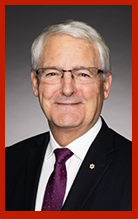
Biographical Information
Born in Quebec City, Quebec, the Honourable Marc Garneau was first elected to the House of Commons in 2008, and re-elected in 2011, 2015, 2019, and 2021.
Mr. Garneau graduated from the Royal Military College of Canada in 1970 with a Bachelor of Science in engineering physics and began his career in the Canadian Forces Maritime Command. In 1973 he received a PhD in electrical engineering from the Imperial College of Science and Technology in London, England.
From 1982 to 1983, he attended the Canadian Forces Command and Staff College in Toronto. While there, he was promoted to the rank of commander and was subsequently promoted to captain(N). Mr. Garneau retired from the Canadian Forces in 1989.
Mr. Garneau was also one of the first six Canadian Astronauts and he became the first Canadian in outer space in October 1984. In February 2001, he was appointed executive vice-president of the Canadian Space Agency and became its president in November 2001.
Mr. Garneau was Minister of Transport from 2015-2021 and Minister of Foreign Affairs January-October 2021. Mr. Garneau is currently not in Cabinet.
Jamie Schmale, Haliburton—Kawartha Lakes—Brock, ON
Critic for Indigenous Services; Vice-Chair INAN
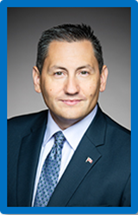
Biographical Information
Born in Brampton, ON, Jamie Schmale was elected to the House of Commons for the first time in 2015, and re-elected in 2019 and 2021.
Prior to his election, Mr. Schmale served as the executive assistant and campaign manager for former Conservative MP Barry Devolin (Haliburton-Kawartha Lakes-Brock, Ontario). He graduated from the Radio Broadcasting program at Loyalist College in Ontario and started his career as a news anchor. He later became a news director for CHUM media.
Mr. Schmale was the critic for Crown-Indigenous Relations in the 43rd Parliament. In the 42nd Parliament, Mr. Schmale served as the opposition critic for Northern Economic Development, and Deputy Critic for Natural Resources. He was a member of the Standing Committee on Procedure and House Affairs (2015-2017) and the Standing Committee on Natural Resources (2017-2019).
Currently, Mr. Schmale serves as the critic for Indigenous Services.
Marilène Gill, Manicouagan, QC
Critic Indigenous and Northern Affairs; Vice-Chair INAN
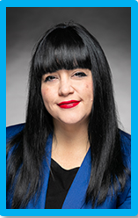
Biographical Information
Born in Sorel, QC, Marilène Gill was first elected to the House of Commons in 2015, and was re-elected in 2019 and 2021.
Prior to her election, Mrs. Gill was teaching at the college level and pursuing doctoral studies in literature. Her background also includes roles as a unionist, development officer, coordinator of the Table de concertation en condition feminine de la Côte-Nord. She is also involved in the Conseil des arts et des lettres du Québec (CALQ). She has also acted as literary director for Éditions Trois-Pistoles, and has published personal works there for which she has received several awards and grants. Mrs. Gill was also political attaché to Michel Guimond, former member and chief whip of the Bloc Québécois.
Mrs. Gill is deputy whip, chair of the Young Families Caucus and critic for Indigenous and Northern Affairs for the Bloc Québécois.
Jenica Atwin, Fredericton, NB

Biographical Information
Jenica Atwin grew up in Oromocto, NB. She was first elected to the House of Commons in 2019 as a Member of the Green Party before joining the Liberal Party in June 2021.
Mrs. Atwin completed a Master's in Education at the University of New Brunswick.
Prior to being elected, she was an education consultant and researcher at a First Nations Education Centre. In 2016, she co-organized a spin-off of We Day focused on introducing First Nations youth to one another and helping those who have recently moved off of reserves.
She is a new member of INAN. She previously served on the COVID-19 Pandemic Committee.
Jaime Battiste, Sydney—Victoria, NS
Parliamentary Secretary to the Minister of Crown-Indigenous Relations
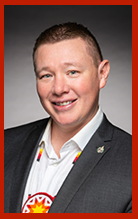
Biographical Information
Born on the Eskasoni First Nation, NS, Jaime Battiste was elected to the House of Commons in 2019 and re-elected in 2021. He is the first Mi'kmaw Member of Parliament in Canada.
Mr. Battiste graduated from Schulich School of Law at Dalhousie University in 2004. He has held positions as a Professor, Senior Advisor, Citizenship Coordinator, and as a Regional Chief for the Assembly of First Nations.
Mr. Battiste's volunteer work over the years involves athletics, youth advocacy, community events, and advocacy for the Mi'kmaq Nation. He is a member of the Aboriginal Sport Circle and a part owner of the Eskasoni Junior B Eagles.
Mr. Battiste served as a representative to the Assembly of First Nation's National Youth Council from 2001-2006. In 2005, the National Aboriginal Healing Organization named him as one of the "National Aboriginal Role Models in Canada." In 2006, as the Chair of the Assembly of First Nations Youth Council, he was one of the founding members of the Mi'kmaw Maliseet Atlantic Youth Council (MMAYC), an organization that represents and advocates for Mi'kmaw and Maliseet youth within the Atlantic region. In 2018, Mr. Battiste was recognized with the Sovereign's Medal for Volunteers, which is a Canadian decoration to honour volunteers who have made significant and continual contributions to their community.
Mr. Battiste was named Parliamentary Secretary to the Minister of Crown-Indigenous Relations in December 2021.
He has been a member of INAN since February 2020 and has previously been a member of the Standing Committee on Fisheries and Oceans.
Michael V. Mcleod, Northwest Territories, NWT
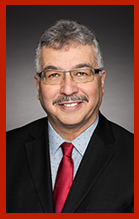
Biographical Information
Born in Fort Providence, NWT, Michael Mcleod was first elected to the House of Commons in 2015 and re-elected in 2019 and 2021.
Prior to entering federal politics, Mr. McLeod served Northwest Territories residents as a member of the Legislative Assembly from 1999-2011 and advised clients in the tourism industry as Tourism Development Officer for the Government of the Northwest Territories. He also previously served as mayor of Fort Providence, president of his Métis Local, and vice-president of Deh Cho Regional Council.
Mr. McLeod earned a diploma in Management Studies from Arctic College and began his career as a self-employed contractor. He has been a member of the Northwest Territories Tourism, NWT Public Utilities, and Mackenzie Valley Environment Impact Review Boards. The latter's mission, conducting fair and timely environmental assessments, remains a key interest.
Mr. McLeod was previously a member of INAN 2016-2017 and has served as a member of the Standing Committee on Finance and as Chair of the Arctic and Northern Caucus.
Marcus Powlowski, Thunder Bay—Rainy River, ON
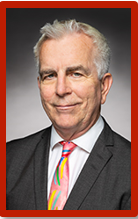
Biographical Information
Born in Fort William, ON, Marcus Powlowski was first elected to the House of Commons in 2019 and re-elected in 2021.
Prior to being elected, Mr. Powlowski served as a physician in the Emergency Room at Thunder Bay Regional Health Science Centre. In addition to being a medical doctor, he has two law degrees - LL.B, LL.M from the universities of Toronto and Georgetown, respectively. He also attended Harvard University and obtained a Masters of Public Health in Health Law and Policy.
Mr. Powlowski worked as a doctor for two years in northern First Nations communities, and for seven years practicing medicine in several developing countries in Africa and Oceania. For several years, he worked as a consultant in health legislation for the World Health Organization. He also volunteered on a medical project in Ethiopia.
Mr. Powlowski has been a member of INAN since February 2020 and has also sat on the COVID-19 Pandemic Committee and the Standing Committee on Health.
Patrick Weiler, West Vancouver—Sunshine Coast—Sea to Sky Country, BC
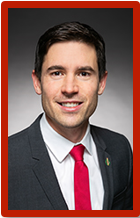
Biographical Information
Born in West Vancouver, BC, Patrick Weiler was first elected to Parliament in 2019 and re-elected in 2021.
Prior to his election, Mr. Weiler was an advocate for safeguarding the environment as an environmental and natural resource management lawyer, representing First Nations, small businesses, municipalities, and non-profit organizations in Canada and internationally. Mr. Weiler has also worked in partnership with the United Nations and international development agencies, with a mission to improve the governance of natural resources and management of aquatic ecosystems.
Mr. Weiler completed a Bachelor of Arts at McGill University and received his Juris Doctor degree from the University of British Columbia's Faculty of Law.
Mr. Weiler served on the Standing Committee on Natural Resources, the Standing Committee on Government Operations and Estimates, and the bi-partisan Climate Caucus and Tourism Caucus.
Gary Vidal, Desnethé—Missinippi—Churchill River, SK
Critic for Crown-Indigenous Relations
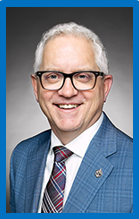
Biographical Information
Gary was born and raised in Meadow Lake in the Desnethé – Missinippi – Churchill River district. He has lived, worked, played, volunteered, and served there his entire life. He graduated from Carpenter High School in 1983 and went on to study at the University of Saskatchewan and Briercrest Bible College. He is a Chartered Professional Accountant (CPA, CGA) and was a partner in the accounting firm Pliska Vidal & Co.
Gary was elected Mayor of the City of Meadow Lake in September of 2011 where he served his community until his resignation in March of 2019. He was elected ViceChair of the Saskatchewan City Mayors Caucus from 2016-2018. He was appointed to the SaskWater Board of Directors in 2008 where he served nearly a decade until 2017. During that time, he held various roles including Chair of the Government and Corporate Responsibility Committee, Chair of the Audit and Finance Committee and finally, Chair of the Board from 2015-2017.
Over the years, Gary has volunteered in a variety of leadership capacities in his local church as well as on the board of Bethel Gospel Camp, an interdenominational children's bible camp. Other volunteer activities include coaching and managing minor hockey, baseball, and soccer teams.
In 2012 he was awarded the Queen Elizabeth II Diamond Jubilee Medal.
Mr. Vidal previously served as the critic for Indigenous Services, and is currently the critic for Crown-Indigenous Relations. He has been a member of INAN since February 2020 and also sat on the Special Committee on the COVID-19 Pandemic during the last Parliament (2019-2021).
Bob Zimmer, Prince George – Peace River – Northern Rockies, BC
Critic for Northern Affairs and Arctic Sovereignty
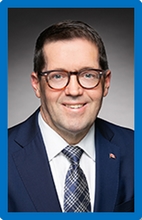
Biographical information
Bob was born in Dawson Creek, BC and raised in Fort St. John, BC. Bob began his career working for his father's family carpentry business where he learned the values of honesty, integrity, and hard work. Through these fundamentals, Bob obtained his Red Seal Journeyman Carpentry Certification and went on to own his own construction business.
He received an undergraduate degree from Trinity Western University in human kinetics and history/political science. Bob also obtained a bachelor's of education degree from the University of British Columbia. He worked his way through University as the head coach for Langley's TWU varsity rugby team. After graduating from the University of British Columbia, Bob moved back to St. John where he taught for seven years and continued to work in construction building several homes.
Bob was first elected as the Member of Parliament for Prince George – Peace River in 2011 and then re-elected as the Member of Parliament for Prince George – Peace River – Northern Rockies in 2015 and again in 2019.
Bob serves as the Co-Chair of the Parliamentary Outdoor Caucus and was Shadow for Minister for Northern Affairs and Northern Economic Development Agency from November 2019 to September 2020.
Since coming into office, Bob has sat on several committees including the Standing Committee on Agriculture and Agri-Food, the Standing Committee for Natural Resources, Standing Committee for Veterans Affairs, and the Standing Committee for Procedure and House Affairs. He has also served as Chair of the Standing Committee on Access to Information, Privacy, and Ethics, Vice-Chair of the Standing Committee on Human Resources, Skills and Social Development and the Status of Persons with Disabilities, Critic for Asia-Pacific Gateway, Chair of the BC/Yukon Conservative Caucus, and Chair of the National Prayer Breakfast.
Bob is a long-time member of the Fort St. John Sunrise Rotary Club, volunteers for many local events and organizations, and well as volunteers and attends his local church with his wife Val and their four children Kristian, David, Tim, and Bobbie
Eric Melillo, Kenora, ON

Biographical information
Eric Melillo is the Member of Parliament for the riding of Kenora. He was elected in the 2019 and 2021 general elections.
Prior to entering politics, he worked as an Associate within a business consulting firm, and as a Policy Research Analyst for a non-partisan think tank. Eric also served as a political staffer while he completed his Bachelor of Arts in Economics at Lakehead University.
Since being elected to Parliament, Eric has been working to deliver positive changes to northwestern Ontario. By standing up to support critical infrastructure projects, meaningful supports for Indigenous communities, and creating better economic opportunities for all. Eric has been a strong representative for the people of the Kenora riding.
Eric was born and raised in Kenora, where he lives with his wife Danaka and their dog Oakley.
Lori Idlout, Nunavut, NV
Critic – Northern Affairs; Critic – Indigenous Services; Critic – Crown-Indigenous Relations
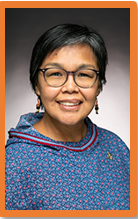
Biographical Information
Born in Igloolik, NU, Lori Idlout was first elected to the House of Commons in 2021.
Prior to her election Ms. Idlout practiced law in Iqaluit with her own firm, Qusugaq Law. She represented the group protesting against the Baffinland Iron Mine's expansion, as well as serving as the technical adviser for the Ikajutit Hunters and Trappers Organization during a public hearing on the issue. Between 2004 and 2011, Ms. Idlout served as the executive director of the Nunavut Embrace Life Council, a not-for-profit organization committed to suicide prevention. She had previously worked for Nunavut's Department of Health and Nunavut Tunngavik Incorporated as a policy analyst, and was the founder of Coalition of Nunavut DEAs as a director of the Iqaluit District Education Authority in order to advocate for educational services.
Ms. Idlout received a bachelor's degree in psychology from Lakehead University in 1997, and a doctorate in law from the University of Ottawa (2018).
She is a new member of INAN and the NDP critic for Crown-Indigenous Relations and Northern Affairs, and Indigenous Services.